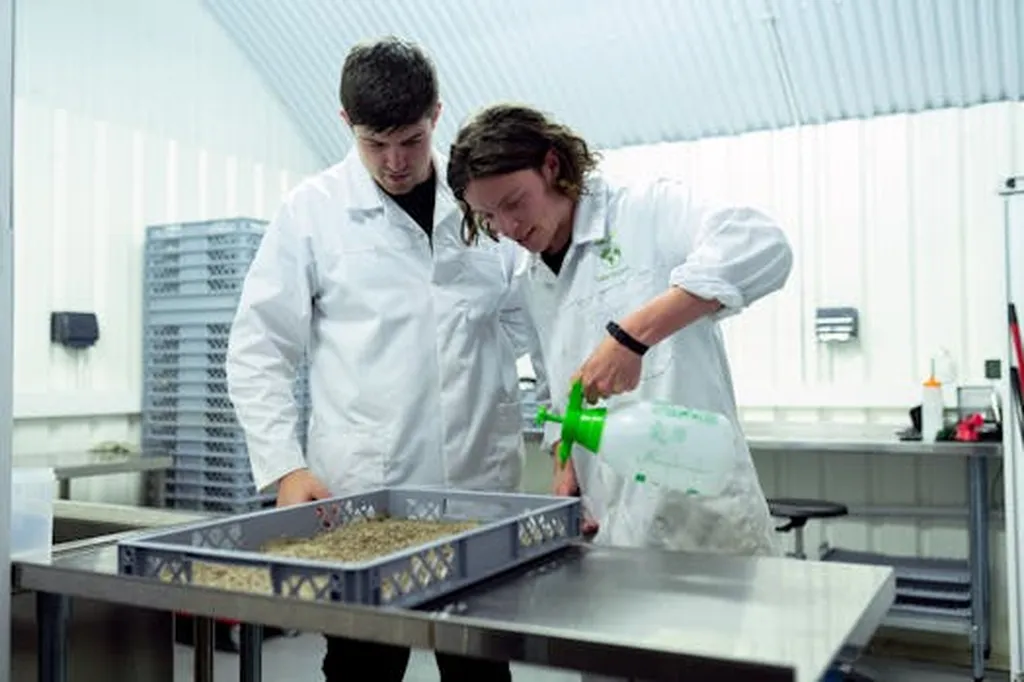In a groundbreaking study published in *Scientific Reports* (translated to English as “Scientific Reports”), researchers from the Chemistry and Biology Department at the University of Salerno have unveiled a novel approach to enhancing agricultural productivity and food quality using biostimulants derived from microalgae by-products. The research, led by Annamaria Di Serio, focuses on protein hydrolysates obtained from the residual biomass of Chlorella vulgaris after polysaccharide extraction, demonstrating significant improvements in the yield and quality of baby leaf lettuce.
The study addresses critical global challenges related to climate change and agriculture, emphasizing the need for sustainable practices that ensure food safety, security, and efficient resource use. By valorizing agro-industrial by-products, the researchers have developed biostimulants that could revolutionize the way we approach crop cultivation.
“Our findings highlight the potential of protein hydrolysates as effective biostimulants,” said Di Serio. “The application of these biostimulants derived from Chlorella vulgaris biomass residues showed remarkable positive effects on lettuce, enhancing both agronomic and qualitative traits.”
The research team assessed various protein hydrolysates (PHs) on lettuce (Lactuca sativa L.), monitoring parameters from seed germination to harvest. The results were promising, with significant improvements observed in physiological and qualitative traits. Notably, plants treated with trypsin-induced hydrolysis of Chlorella vulgaris biomass (TPH-1000) exhibited the highest content of bioactive compounds and antioxidant activity. Additionally, pepsin protein hydrolysates (PPH-1000) demonstrated substantial enhancements in agronomic, physiological, and qualitative performance.
“These biostimulants not only improve crop yield but also enhance the nutritional value of the produce,” explained Di Serio. “This dual benefit makes them a valuable tool in the context of sustainable agriculture and climate change mitigation.”
The study’s findings suggest that biostimulants derived from agro-industrial by-products represent a promising and resource-efficient approach to supporting agricultural productivity and food quality. This research could pave the way for future developments in the field, encouraging the exploration of similar biostimulants from other microalgae and agricultural residues.
As the world grapples with the challenges of climate change and the need for more sustainable practices, this research offers a glimmer of hope. By leveraging the potential of microalgae by-products, we can move towards a more efficient and environmentally friendly agricultural system. The implications for the energy sector are also significant, as the development of such biostimulants could reduce the reliance on synthetic fertilizers and pesticides, contributing to a more sustainable and resilient food system.
In the words of Di Serio, “This is just the beginning. The potential applications of these biostimulants are vast, and we are excited to explore their impact on other crops and agricultural systems.” As we look to the future, the integration of such innovative solutions will be crucial in ensuring food security and sustainability for generations to come.

